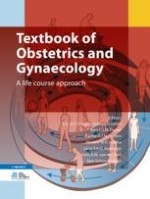The Textbook of Obstetrics and Gynaecology: a life course approach is the latest edition of the Dutch Textbook Obstetrie en Gynaecologie, de voortplanting van de mens, which has been the leading handbook in Dutch medical and midwifery schools since 1993.
In this current edition, for the first time, a life course approach to women’s health is applied to the clinical practice of Obstetrics and Gynaecology. Life is considered a continuum ‘from the cradle to the grave’, where each life stage affects the individual’s health and wellbeing and that of future generations. This approach in obstetric and gynaecological patient care provides a path towards healthy ageing, with specific attention for lifestyle, prevention and social context. By managing not only disease, but also the health of the population, women’s healthcare providers will deliver future care in a much more multidisciplinary fashion.
The textbook’s structure and content have been completely revised and rewritten according to the life course approach, and the volume has been considerably condensed by an outstanding team of authors. The illustrative material has also been renewed, and now includes 3D video animations and films of five surgical procedures in the e-book version.
The textbook should serve as a reference not only for medical and midwifery students but also for gynaecologists in training and other clinicians who have the privilege of caring for women and their families, from the earliest moments in life onwards.
